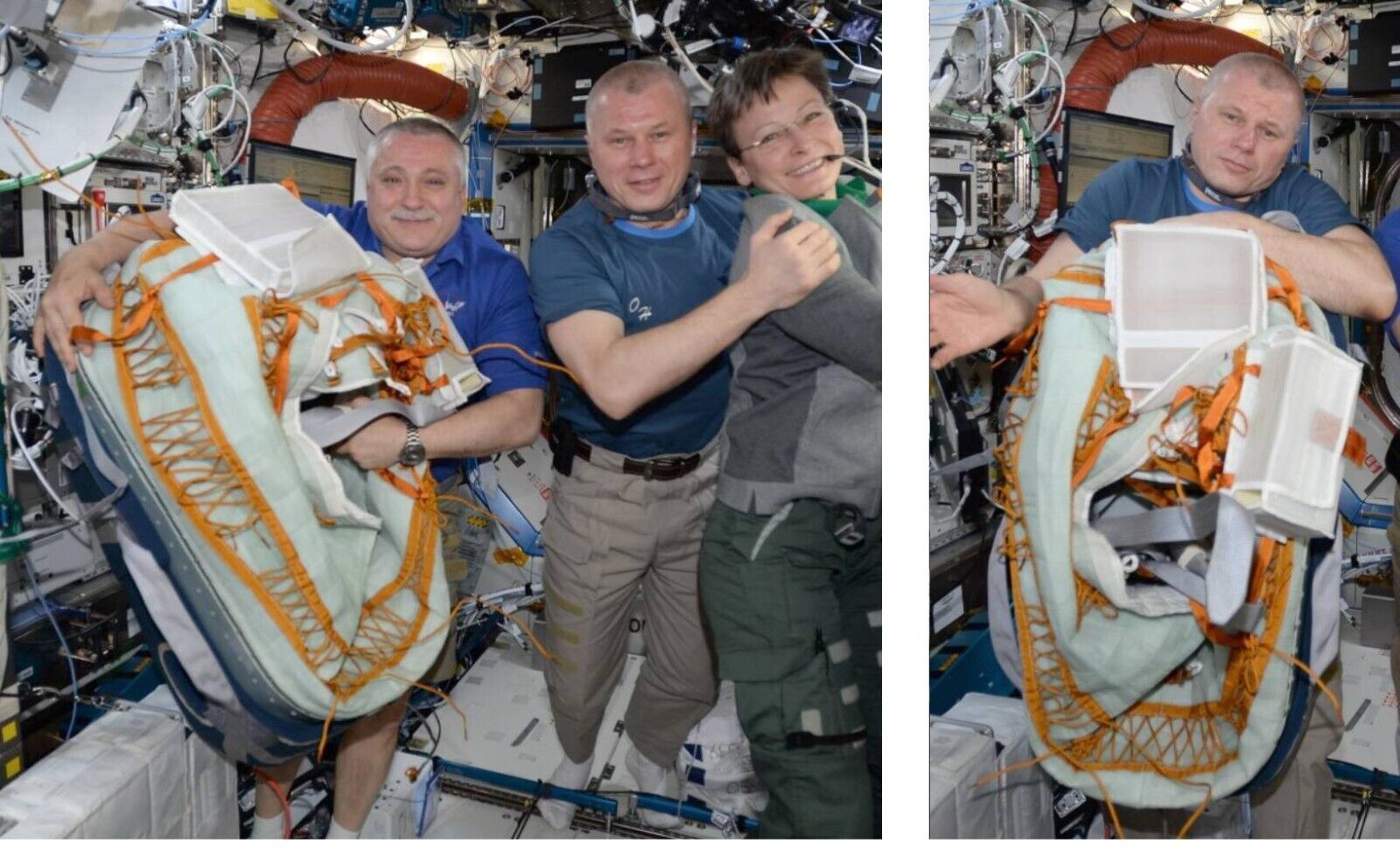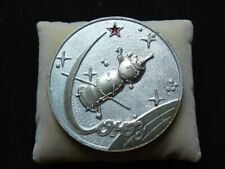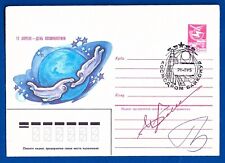Soyuz T-13 Kazbek transport container Salyut 7 Soviet Space flown part RAR For Sale

When you click on links to various merchants on this site and make a purchase, this can result in this site earning a commission. Affiliate programs and affiliations include, but are not limited to, the eBay Partner Network.
Soyuz T-13 Kazbek transport container Salyut 7 Soviet Space flown part RAR:
$14890.00
This part is sold for the first time and that it never happens again.Soyuz T-13Kazbek transport container33U 11F732 Nr.21L
Genuine flown Soyuz parts.No museum in the world
is in possession of this part.
In place of the third Kazbek seat, is mounted a container for repair parts.
This part is very large, like the whole Kazbek seat.
It can be enlarged to 1/3 the size bulk of the Soyuz descent module.
It is probably made of
aluminum - lithium alloy,
the weight is less than 5kg is lightweight and is very large. You can pack in more than 400kg.
This container has not been used for 30 years, now they are flying to ISS rocketse.g.Progres with food, watter, Orlan Suits and spare parts.And in Soyuz there are always fly 3 cosmonauts.
Has several scratches. You do not need to paint, just wash the white-green fabrics.It is not dented, it is not cracked, very good style=\"font-family: Arial; text-align: start;\">
Mission highlights
Soyuz T-13 was the 8th expedition to Salyut 7.
Vladimir Dzhanibekov could have had no notion that he would so soon visit Salyut 7 after his Soyuz T-12 flight, and what more on the first Soyuz flight to dock manually with an inert space station, as Salyut 7 had been crippled by a solar array problem. For this purpose modifications were made to the Soyuz spacecraft to include control levers for proximity operations. Viktor Savinykh\'s and Vladimir Dzhanibekov\'s mission was successful and they were able to salvage the Salyut 7 station. Savinykh remained aloft for 169 days, returning to Earth in Soyuz T-14; Dzhanibekov returned to Earth in Soyuz T-13 with Grechko after spending 110 days on Salyut 7. Before deorbiting, Soyuz T-13 spent about 30 hours conducting rendezvous and docking tests.
Salvaging Salyut 7
The effort to salvage Salyut 7 was, in the words of author David S. F. Portree, \"one of the most impressive feats of in-space repairs in history\". As the crew approached the inert station, they saw that its solar arrays were pointing randomly as it rolled slowly about its long axis. They used a handheld laser rangefinder to judge their distance, and conducted a fly-around inspection to be certain the exterior was intact. Dzhanibekov noted that the thermal blankets on the transfer compartment had turned a dull gray from prolonged exposure to sunlight.
Dzhanibekov piloted his ship to intercept the forward port of Salyut 7, matched the station\'s rotation and achieved soft dock with the station. Upon achieving hard dock—the only time a spacecraft has docked with an inert space station—the crew confirmed through the electrical connectors in the docking collars that the Salyut 7 electrical system was dead. They carefully sampled the air in the station before opening the hatch. The station air was very cold, but breathable. Frost covered the walls and apparatus. The cosmonauts wore winter garb, including fur-lined hats, as they entered the station.
The first order of business was to restore electric power. Two of the eight batteries were destroyed, the rest fully discharged. Dzhanibekov determined that a sensor in the solar array pointing system had failed, preventing the batteries from recharging. A telemetry radio problem prevented the TsUP (mission control center) from detecting the problem. Salyut 7 had quickly run down its batteries, shutting down all its systems and accounting for the break in radio contact.[citation needed] The cosmonauts set about recharging the batteries and used Soyuz T-13 to turn the station in order to point its solar arrays to the sun.
On June 10 they turned on the air heaters. The cosmonauts relied on the Soyuz T-13 air regeneration system until they could get the Salyut 7 system back in order. On June 13 the attitude control system was successfully reactivated. This was cause for jubilation, as it meant Kosmos 1669 (a Progress supply spacecraft) bearing replacement parts could dock with Salyut 7. The station’s water tanks thawed by the end of June – freezing had destroyed the water heater, so the cosmonauts used a powerful television light to heat fluids. Wall heaters were turned on only after all the frost had evaporated, in order to prevent water from entering equipment. Normal atmospheric humidity was achieved only at the end of July, nearly two months after docking.

Related Items:
Soyuz T-13 Kazbek transport container Salyut 7 Soviet Space flown part RAR
$14890.00
transport spacecraft "SOYUZ-35" USSR
$35.00
1985 Soyuz T-13 full crew signed cover
$50.00



